Parakeets are a popular type of pet bird known for their playful and energetic personality. Like all animals, they have specific social and mating behaviors that are important for their well-being and happiness. Parrots are flock animals, after all! But do parakeets mate for life, like many other birds do?
Here, we will explore the topic of parakeet mating and provide information on how to properly care for and meet the social and behavioral needs of these special birds.
Do parakeets mate for life? Are parakeets monogamous? And should you keep them in pairs? Let’s find out!
Did you know? Technically, ‘parakeet’ refers to all long-tailed parrots, but it’s a term also often used to refer to one parakeet species in particular: the budgie or budgerigar, a small Australian bird that holds the #1 spot of the most common pet parrot. The terms are often interchangeable depending on where you are in the world.
This post contains affiliate links. If you make a purchase, a small percentage will go directly to Psittacology at no additional cost to you. Thank you for supporting Psittacology!
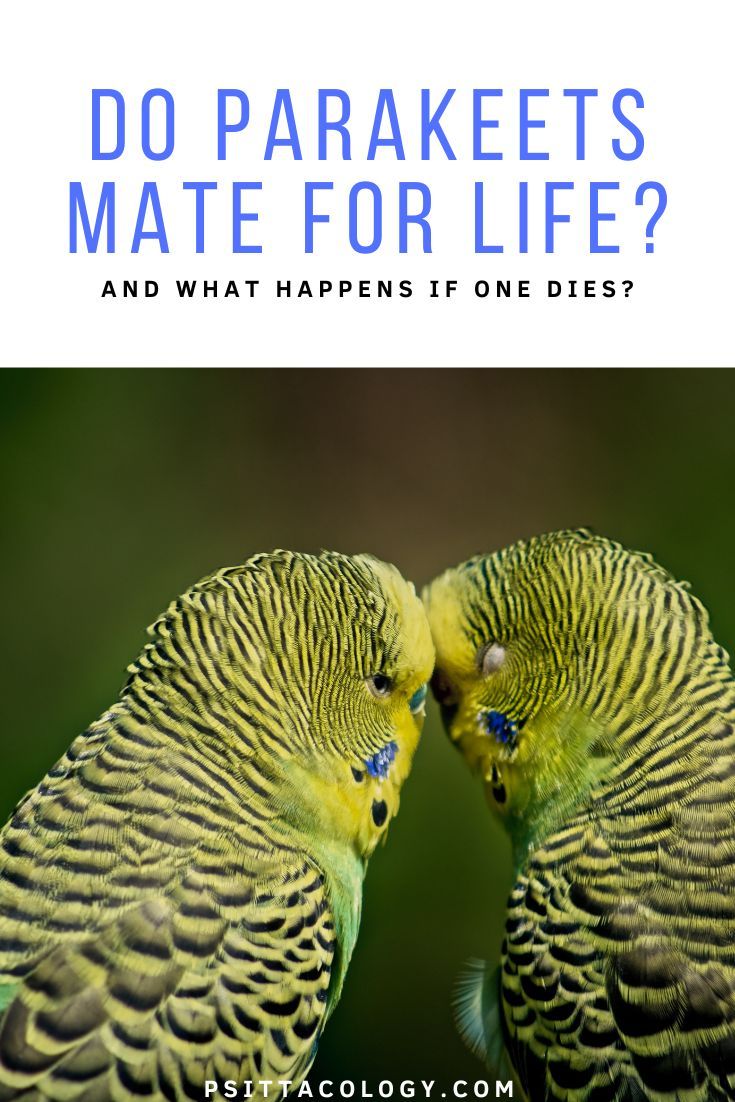
Are parakeets monogamous?
Parakeets are generally considered to be monogamous birds. Parakeets form their pair bonds through a process called courtship, which involves a series of behaviors such as singing, dancing, and feeding each other.
According to research, bonded parakeet pairs are able to withstand the introduction of a third bird (either male or females) without it affecting their relationship. Once they choose their mate, they stick with them!
As with many bird species, both the male and the female bird participate in caring for their young. Both the male and female will take turns incubating the eggs, gathering food, and feeding the chicks when they hatch.
Did you know? Although they form monogamous bonds, male budgies have been observed cheating! In larger flocks, they will sometimes try to mate with a different female when their partner can’t see them. Cheeky, but it probably has an evolutionary advantage.
Baltz & Clark, 1997
Do parakeets mate for life?
Yes, parakeets form strong monogamous pairs and will typically mate for life. Their partner can be of the same or a different sex. “Gay” parakeet relationships are especially common if you only keep males. If one of the pair dies, the surviving partner will surely be affected.
With time, though, the surviving parakeet will likely find a new partner. This can sometimes be a slow and difficult process, so it is important to allow the parakeet a little time to grieve and adjust before introducing a new potential partner.
Did you know? According to research, female budgies have a preference for males whose flock calls resemble their own. Once they pair up, the male’s calls will start to resemble his partner’s more and more over time.
Moravec, Striedter, & Burley (2006)
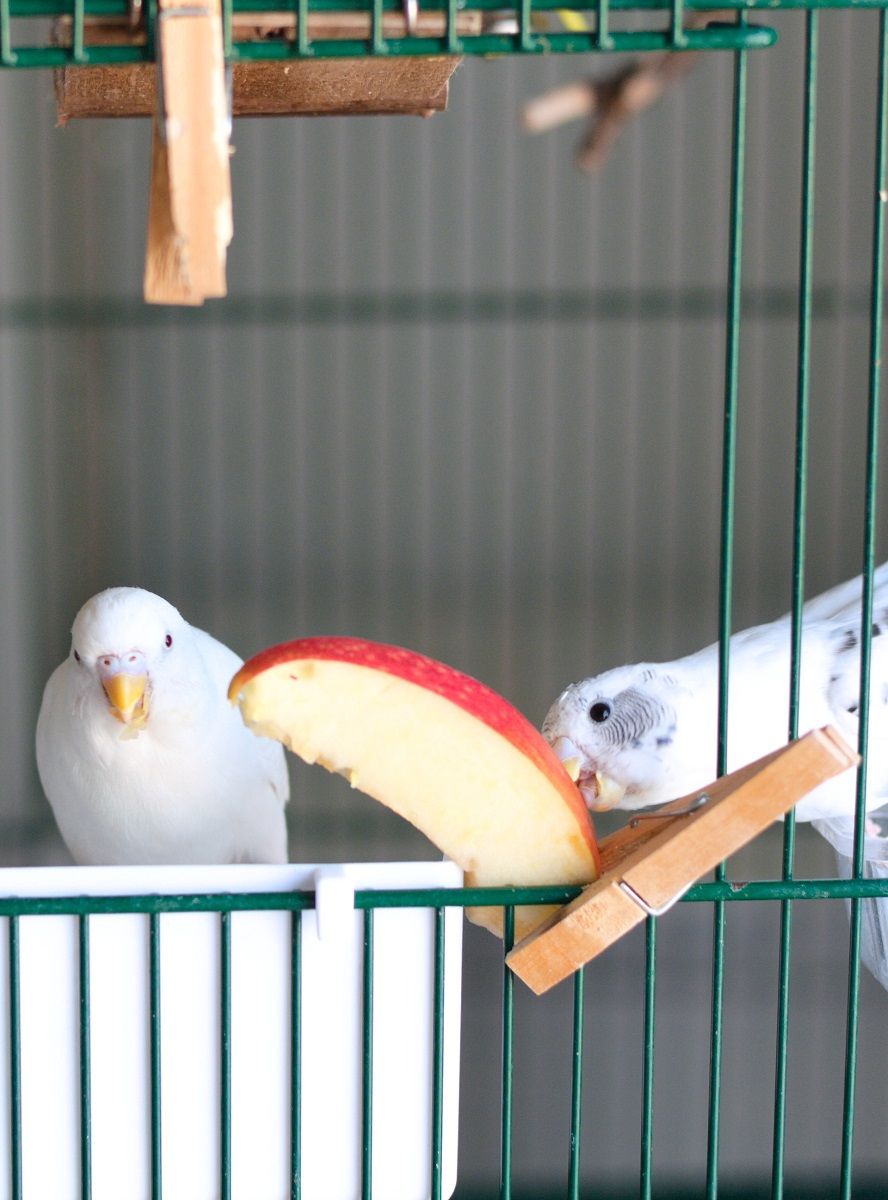
Should you keep parakeets in pairs?
Here at Psittacology, our stance is that while it’s possible for parakeets to be kept alone, especially if you work from home, we still recommend keeping them in pairs. Since they are such highly social birds, being part of a pair really enriches their life.
People are worried they’ll lose their bond with their bird if they keep multiple parakeets, but with good training, that doesn’t have to be true at all. In fact, with patience and dedication, you can have just as close a relationship with your parakeets as your parakeets have with each other.
Think of what we know about parakeets in the wild! You can usually find them in groups of three to four parakeets or even in groups of as many as one hundred. In the wild, they live in flocks and depend on each other for socialization, companionship, and protection.
In captivity, keeping parakeets in pairs allows them to mimic this natural social behavior. It can greatly help prevent them from becoming lonely or isolated, factors that can lead to so much stress for these little parrots that their lifespan shortens and they become vulnerable to disease.
It’s important to consider the gender of the parakeets when keeping them in pairs. I personally prefer going for male/male pairs, which will usually bond just as well as male/female birds do.
The advantage of same-sex couples is that there’s no risk of baby birds (see more below) and no worries about the female becoming the victim of sex-specific issues like potentially deadly egg-binding.
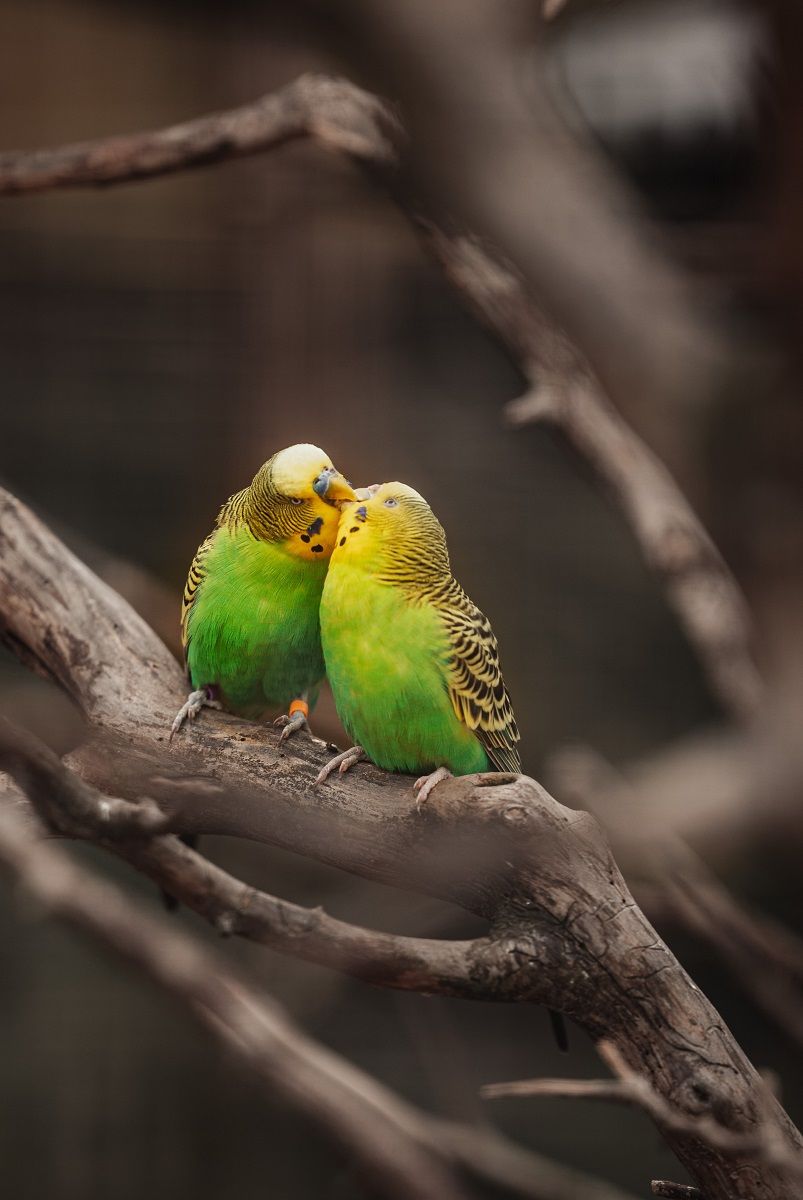
Help, my parakeet’s mate died!
Dealing with the loss of a pet is always hard, but it can be even harder for our parakeets who have lost a partner. It is perfectly natural for a parakeet to go through a grieving stage or a period of mourning.
There are things you can do to help get your bird through this difficult time. But first, it’s important to know the signs of a bird who may be suffering from grief and loss.
A few of the most common signs of a grieving parakeet are:
- Loss of appetite
- Sudden or increased aggression
- Searching and calling out for their companion
- Feather-plucking
- Obsessive behaviors
- Change in vocalization
It is important to note that some of the signs of a grieving parakeet can also be signs of other underlying health conditions. If you have any concerns, it will be important to speak with a veterinarian specializing in avian medicine.
Additionally, some believe there may be some benefit in allowing the surviving parakeet time to physically say goodbye and time to process the concept that their partner is no more.
Instead of removing the deceased parakeet from its habitat right away, consider leaving the body in the cage for another thirty minutes to an hour. After this, it should be removed.
The theory is that by allowing the surviving parakeet time to process, they may better understand the finality. And hopefully, it would keep the surviving parakeet from fruitlessly calling out and searching for their companion.
What can we do to help our parakeet? First, know that a grieving stage or a period of mourning is normal for birds. Most experts agree that this period can last anywhere from two to four weeks. They’re just confused, their routine has been completely disrupted, and they may even feel unsafe without their mate.
Did you know? Scientists have found that female budgies will prefer the recorded calls of their male mate over other male budgie calls for up to 6 months after the pair was separated. They’re quite loyal!
Eda-Fujiwara et al., 2011
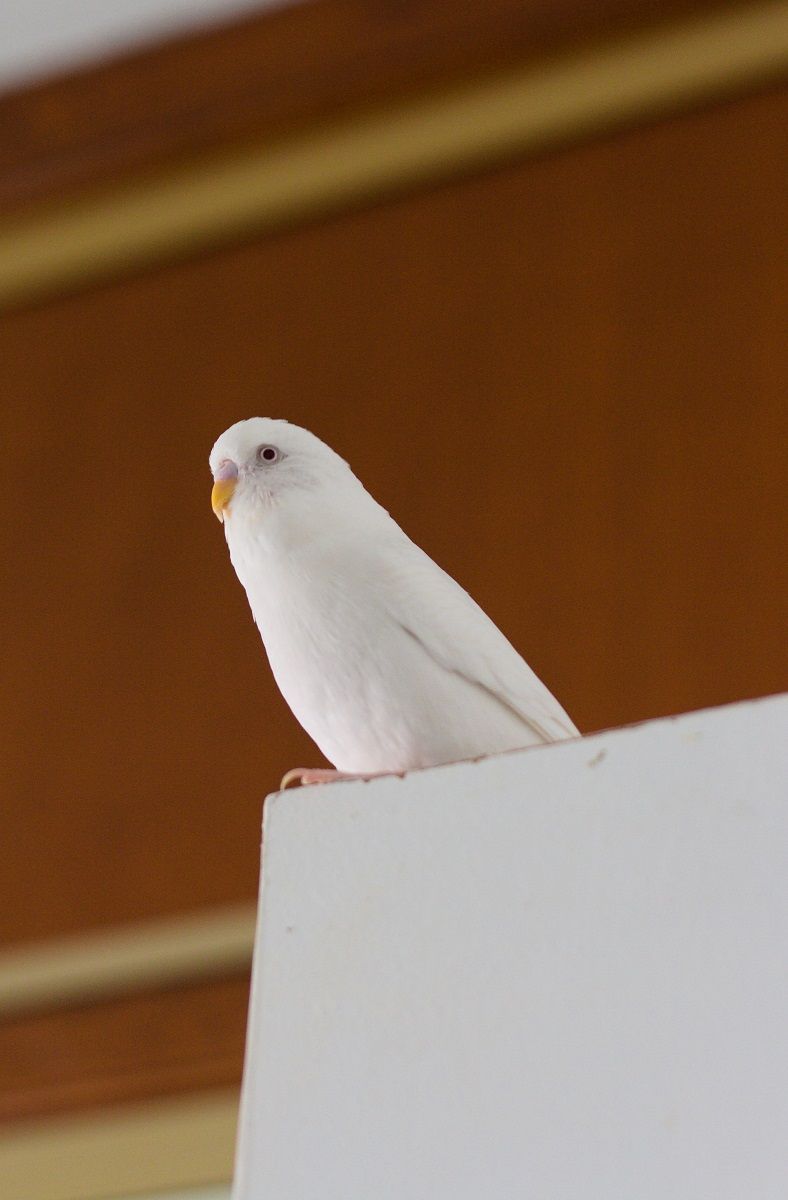
Helping a grieving parakeet
During this time, the easiest thing you can do for your parakeet is to spend extra quality time together. Even if the bird in question isn’t tame, it can still help for you to stay close to the cage. If you work from home, for example, maybe you could set the cage next to your desk? It helps your bird feel like there’s still safety in numbers.
Another thing you can do is provide a change of scenery. Providing it has been bird-proofed, offer your bird the opportunity to explore an area of the house they may not have seen before.
You could consider moving the cage or habitat to another location, preferably one closer to where you will be and with views of the outside world. Of course, be sure wherever you do move the cage to is in a safe location (e.g., not in the kitchen, away from drafts and fumes).
Consider playing some gentle, relaxing music for your bird or leaving the TV or radio on when you have to leave. This can be comforting and provide a good distraction.
Yet another fantastic way to provide distraction is to offer new toys. New toys or activities can also be helpful in helping your parakeet cope with the loss of their mate. Providing new and engaging toys can help keep your parakeet occupied and mentally stimulated, which can be especially important during a time of loss.
Some ideas for new toys might include:
- Chew toys: Parakeets love to chew, and providing them with new chew toys will help keep them busy.
- Foraging toys: Searching for treats in foraging toys or a foraging box can provide mental stimulation and help keep parakeets entertained.
- Swings and perches: Providing your parakeet with new swings and perches can give them a change of scenery and help keep them active.
Don’t add a mirror toy thinking that will give your parakeet some comfort. As discussed in the post on parakeets and mirrors, they can become obsessed with their reflection. This is potentially stressful, because they don’t understand why it doesn’t respond like a real mate would.
Introducing a new mate for your parakeet
Eventually, once your parakeet has gotten used to its mate being gone, it may become time to start thinking about adding another parakeet to your family. Introducing a new mate to a parakeet can be a process that requires a little patience and a lot of careful observation.
It’s important to keep the parakeets separated in different rooms at first. All new birds should be quarantined before introducing them, after all! This helps prevent them from being able to spread any diseases they might have to your existing bird(s).
Once the quarantine period has passed, still provide both parrots with plenty of space to help them feel more comfortable. Gradually introduce them by placing their cages side by side and increasing the amount of time they spend together.
Observe their behavior and pay attention to any aggressive or dominant behavior. If you notice any aggressive behavior or signs of stress, it may be necessary to separate the parakeets to provide them with some space from each other.
This being said, two parakeets usually get along like a house on fire right from the start. Being vigilant is important, but problems are luckily rare!
Make sure that both parakeets have access to plenty of food and water to help reduce any competition for resources. With patience and careful observation, you can help your parakeets form a strong bond and become happy mates.
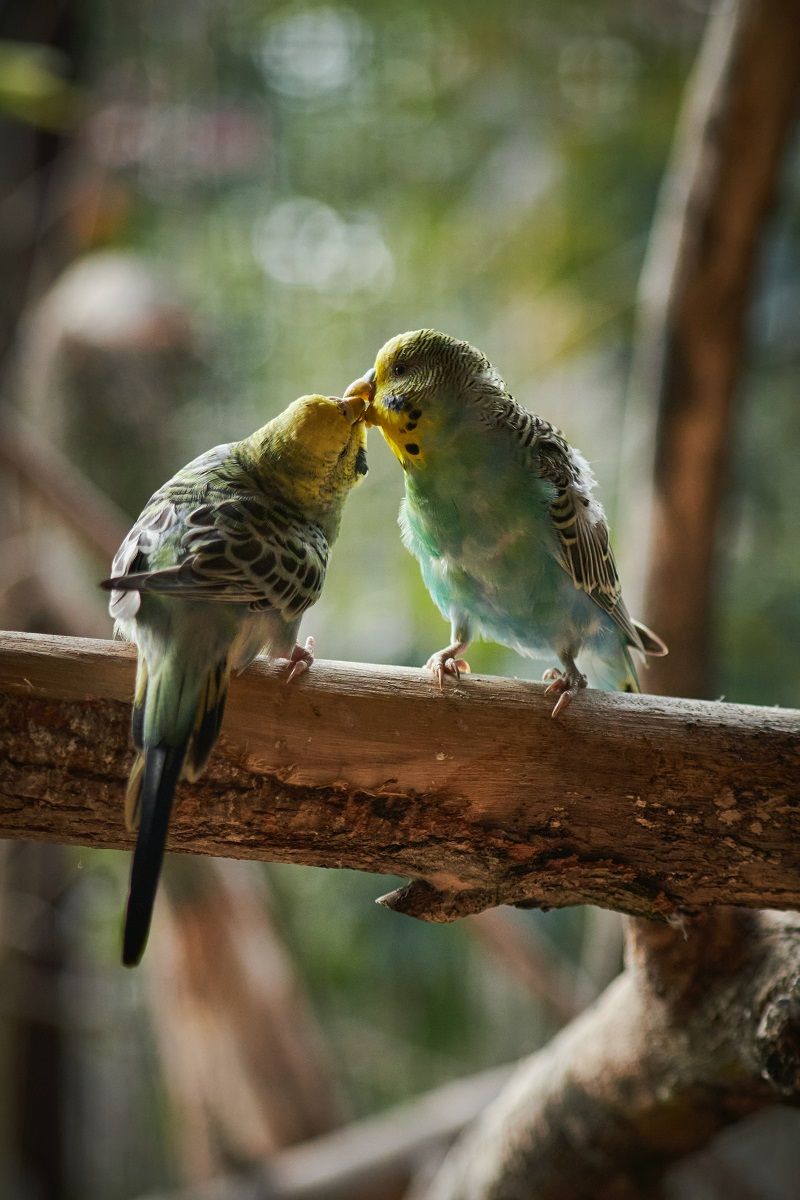
Should you breed your parakeets?
It’s generally not recommended for most people to breed their parakeets. Breeding parakeets can be a time-consuming and resource-intensive process. It requires a certain level of dedication, knowledge, and experience.
The parents and chicks will need constant care and attention, and it’s important to be prepared to handle any medical or behavioral issues that may arise. If your parakeet laid an egg, you may want to remove it.
Unfortunately, inexperienced breeders and inexperienced parent birds can result in chicks that are rejected or killed by the parents. This can mean substantial fees from specialist avian veterinarians to care for rejected or hurt babies. It can all just be quite heartbreaking as well.
Moreover, it is important to consider whether there is truly a need for more parakeets in your area and whether you will be able to find good homes for the chicks. Parakeets are incredibly popular pets and can be found in just about any pet store.
Unfortunately, many that are sold in pet stores end up in shelters and rescues because some people don’t appreciate or recognize the complex needs pet birds have.
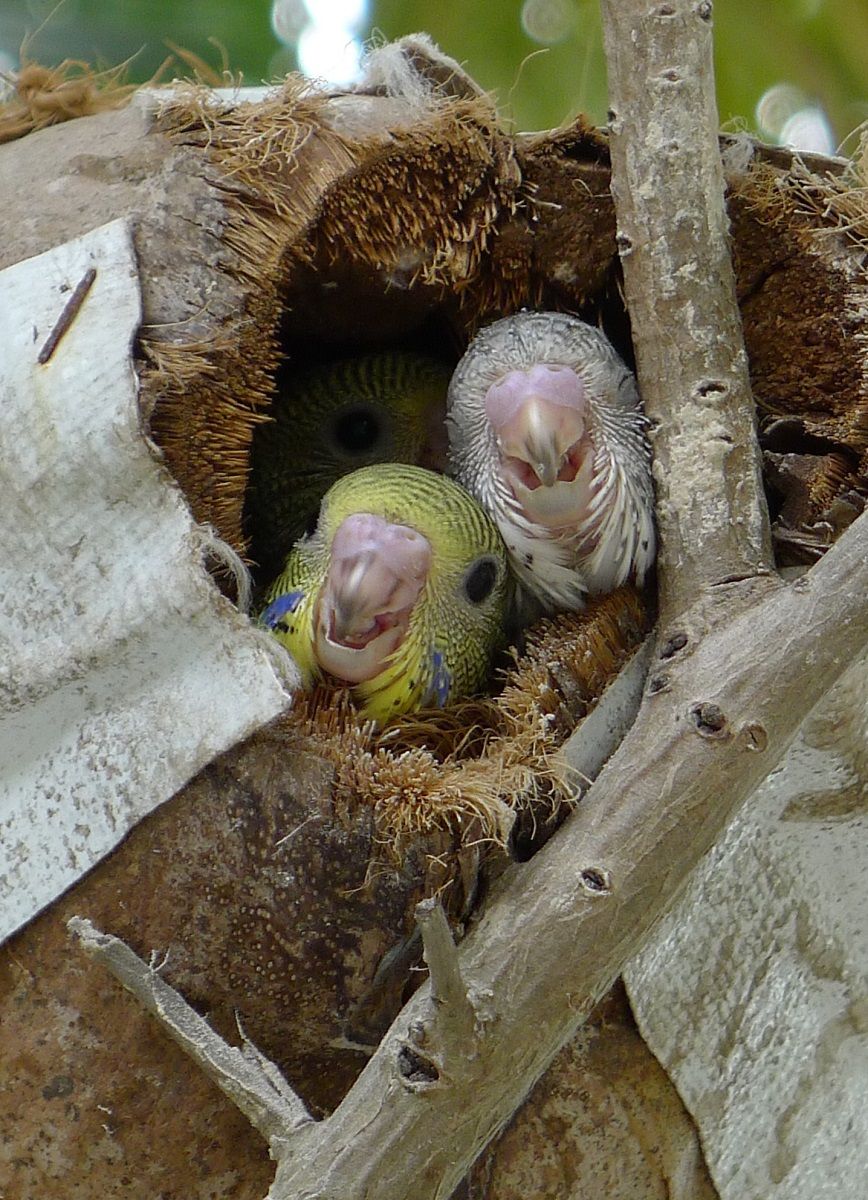
Frequently asked questions
Although they usually mate in summer, parakeets may get frisky all year round.
It’s usually easy to tell the difference: mating is quiet, fighting is definitely not. However, sometimes it’s both! Parakeet breeding season can come with its share of (territorial) squabbles. Unless pairs are visibly hurting each other, in which case it may be wise to separate them, it’s usually best to just leave them be.
Conclusion: do parakeets mate for life?
So, do parakeets mate for life? Yes! Parakeets are social creatures that thrive when kept in pairs. Losing a mate can be difficult for them. It is important to provide parakeets with plenty of socialization and attention to help them cope with the loss of a mate.
While parakeets typically do best in male-female pairs, it is still usually best to avoid encouraging them to breed. Though breeding parakeets can be a rewarding experience, it is important to carefully consider the responsibilities and resources required to properly care for the offspring.
Raising baby parakeets requires a significant time and financial commitment, as well as a suitable environment and proper diet.
In many cases, it may be more fulfilling to focus on providing a healthy and enriching environment for your pet parakeets rather than breeding them. Regardless of whether you choose to breed or not, a bonded pair of parakeets can make great companions when given the proper care and attention.
Sources & further reading
BALTZ, A. P., & CLARK, A. B. (1997). Extra-pair courtship behaviour of male budgerigars and the effect of an audience. Animal behaviour, 53(5), 1017-1024.
Eda-Fujiwara, H., Kanesada, A., Okamoto, Y., Satoh, R., Watanabe, A., & Miyamoto, T. (2011). Long-term maintenance and eventual extinction of preference for a mate’s call in the female budgerigar. Animal behaviour, 82(5), 971-979.
Moravec, M. L., Striedter, G. F., & Burley, N. T. (2006). Assortative pairing based on contact call similarity in budgerigars, Melopsittacus undulatus. Ethology, 112(11), 1108-1116.
Stilwell, A. M. (2015). Manipulation of Same Sex Social Pair Bonds in Budgerigars, Melopsittacus undulatus.


Thank you for sharing. This is good information to know as I have 2 male Budgies and just recently was given a female due to fact owner couldn’t care for her.
I had 1 male for almost yr on his own then got him another male friend they been together 7 months before got female.
I’m praying they all just stay friends and no mating.
Good on you for taking in the girl! There’s no way to prevent them from dancing the horizontal tango, but it will usually be alright as long as there’s nothing in the cage that resembles a nest. If she does lay eggs, I know many folks just remove them, since budgies usually don’t produce more to replace them. Alternatively, you can give her fake eggs until she loses interest. Good luck! I’m sure it’ll be fine. 🙂